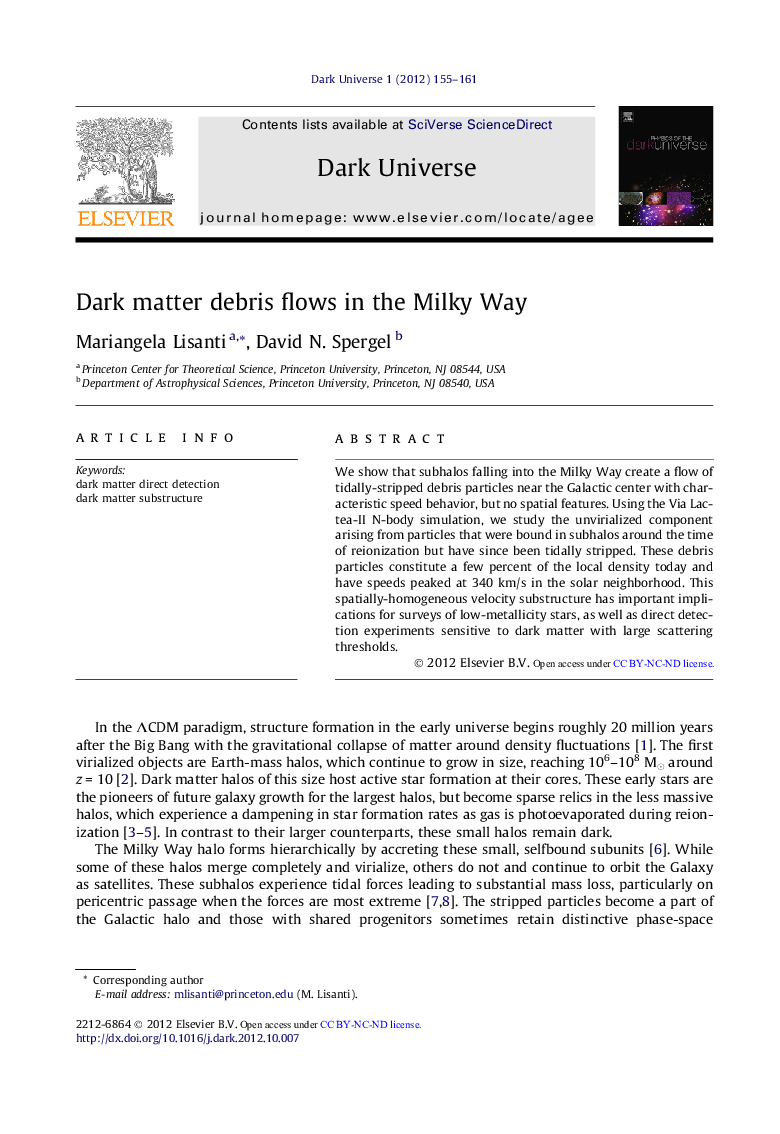| Article ID | Journal | Published Year | Pages | File Type |
|---|---|---|---|---|
| 1780794 | Physics of the Dark Universe | 2012 | 7 Pages |
Abstract
We show that subhalos falling into the Milky Way create a flow of tidally-stripped debris particles near the Galactic center with characteristic speed behavior, but no spatial features. Using the Via Lactea-II N-body simulation, we study the unvirialized component arising from particles that were bound in subhalos around the time of reionization but have since been tidally stripped. These debris particles constitute a few percent of the local density today and have speeds peaked at 340 km/s in the solar neighborhood. This spatially-homogeneous velocity substructure has important implications for surveys of low-metallicity stars, as well as direct detection experiments sensitive to dark matter with large scattering thresholds.
Keywords
Related Topics
Physical Sciences and Engineering
Physics and Astronomy
Astronomy and Astrophysics
Authors
Mariangela Lisanti, David N. Spergel,
